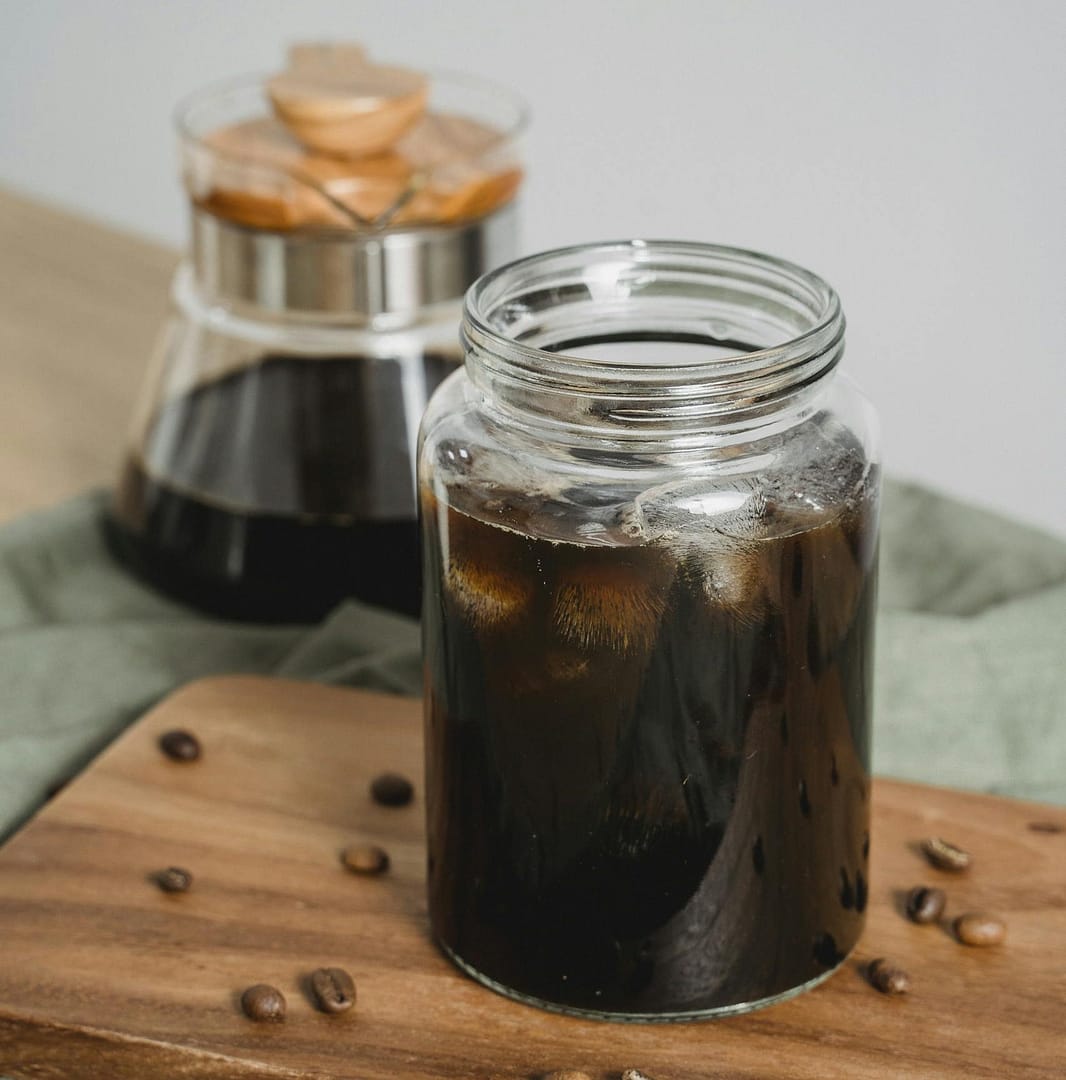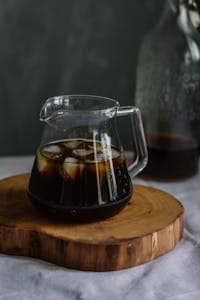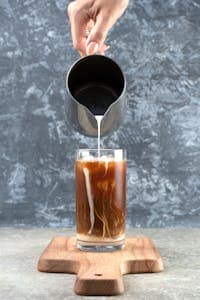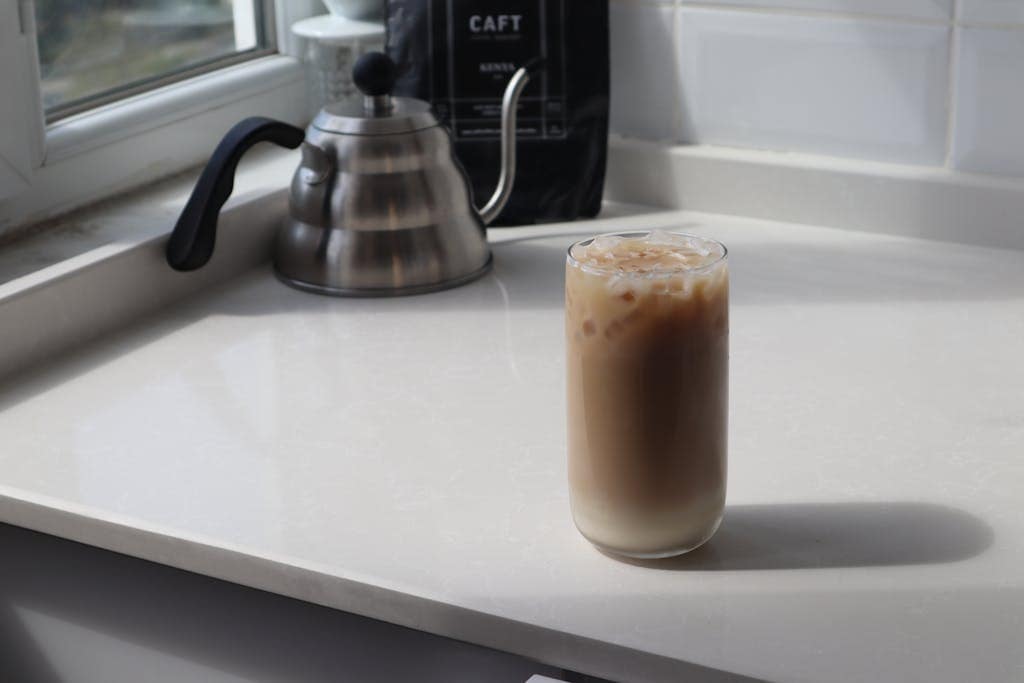Love cold brew coffee but not sure which beans to choose? You’re in the right place. Cold brew has been winning hearts with its smooth, rich flavor and low acidity, making it a summer favorite and a versatile beverage for any time of the year. Picking the right coffee beans can make all the difference in your cold brew experience. From the deep, chocolatey notes of dark roasts to the bright, fruity profiles of light roasts, there’s a wide range of choices to explore. Not sure if you prefer cold brew over iced coffee? See this post to clear up the difference: Cold Brew vs Iced Coffee Let’s dive in and find out best coffee beans for cold brew, that will give you that perfect, refreshing sip every time.
Understanding Cold Brew Coffee
Cold brew coffee has become a popular choice for coffee lovers who crave a smooth and refreshing caffeinated drink. Let’s dive into what makes cold brew special and how it stands up against iced coffee.
What is Cold Brew?
Cold brew coffee is made by soaking coarse coffee grounds in cold water for 12 to 24 hours. This slow brewing method creates a coffee concentrate, which is then mixed with water, milk, or a milk alternative before serving. Unlike traditional hot-brewed coffee, a cold coffee brew has a smooth, mellow flavor with much lower acidity.

Photo by Yusril Khaerul Muslim
- Smooth Taste: The extended brewing time ensures a less bitter taste.
- Low Acidity: Cold brew is gentler on the stomach due to its lower acidity.
- Versatile: Enjoy it straight, on ice, or as a base for creative coffee drinks.
Cold Brew vs. Iced Coffee
While both cold brew and iced coffee are served cold, they are quite different in preparation and flavor.
- Brewing Methods:
- Cold Brew
: Steeped in cold water for up to 24 hours.
- Iced Coffee: Brewed hot and then cooled down by pouring over ice.
- Cold Brew
- Flavor Profiles:
- Cold Brew: Offers a rich, smooth, and slightly sweet taste without bitterness.
- Iced Coffee: Can taste more robust and often retains the bold flavors of hot coffee but with a potential for increased bitterness when cooled.
- Caffeine Content:
- Cold Brew: Generally has a higher caffeine concentration due to the longer brewing process and coffee-to-water ratio.
- Iced Coffee: Typically has less caffeine compared to cold brew since it’s brewed hot initially and then diluted with ice.
In essence, if you’re looking for a smooth, rich experience with less acidity, the cold brew method is your go-to. On the other hand, if you prefer the traditional coffee taste in a colder form, iced coffee might suit you better.
Factors to Consider When Choosing the Best Coffee Beans for Cold Brew
When it comes to making the perfect cold brew coffee, choosing the right coffee beans is essential. The flavor, smoothness, and overall experience of your cold brew depend on several factors. Here are key aspects to consider: roast level, grind size, and bean origin.
Roast Level

Photo by ROMAN ODINTSOV
The roast level of coffee beans significantly impacts the flavor profile of your cold brew. Here’s how:
- Light Roast: These beans preserve the original flavors of the coffee. Expect fruity, floral, or acidic notes. They can give your cold brew a bright, refreshing taste. However, some might find light roasts too acidic for cold brew.
- Medium Roast: These beans strike a balance between the original flavor and the roast characteristics. Medium roasts tend to offer a mix of acidity and sweetness, making them an excellent choice for a balanced cold brew.
- Dark Roast: These beans bring out deeper, bolder flavors. Dark roasts are known for their chocolatey, nutty, and sometimes smoky notes. They produce a rich and smooth cold brew, with lower acidity compared to lighter roasts.
Grind Size
Grind size is crucial for cold brewing for a smooth and delicious cold brew. Using a coarse grind is particularly important:
- Coarse Grind: Cold brew requires a coarse grind because it allows for a slow extraction process. A coarse grind prevents over-extraction, which can lead to a bitter taste. It also helps in achieving a clean and less muddy brew.
- Avoid Fine Grind: Using a fine grind can result in over-extraction, making your cold brew bitter and overly robust. It can also make the filtration process difficult, leaving you with a gritty texture.
An easy way to remember is that coarse grind looks like sea salt, while fine grind resembles table salt.
Bean Origin
The origin of coffee beans significantly impacts the flavor of your coffee for cold brew. Different regions produce beans with unique flavors:
Ethiopian Beans: Known for their bright and fruity notes, Ethiopian beans can give your cold brew a light and vibrant flavor. They often have hints of berries and citrus, making them perfect for a refreshing cold brew.
- Brazilian Beans: These beans are generally lower in acidity with chocolaty and nutty flavors. Brazilian coffee is excellent for those who prefer a smooth and rich cold brew.
- Colombian Beans: Colombian coffee is a popular choice due to its balanced flavor profile. It offers a mix of fruity and nutty notes, making it versatile for various cold brew styles.
In summary, the right beans can transform your cold brew coffee from good to great. Whether you enjoy fruity light roasts, balanced medium roasts, or dark roast coffee, there’s a perfect bean out there for your cold brew needs.
Top Coffee Bean Recommendations for Cold Brew
Finding the perfect coffee beans for cold brew can greatly enhance your experience making cold brew. Here’s a curated list of some of the best beans to try for an exquisite cold brew.
1. Indonesian Sulawesi
Indonesian Sulawesi beans are known for their rich, earthy flavor profile. This makes them an excellent choice for cold brew. With hints of spice, cedar, and dark chocolate, these beans deliver a smooth and robust brew. The low acidity ensures a mellow and balanced drink that’s easy on the stomach. Perfect for those who enjoy deep, complex flavors in their cold brews.
2. Ethiopian Yirgacheffe
Ethiopian Yirgacheffe beans are famed for their fruity and floral notes. These beans often have distinctive hints of berries, citrus, and jasmine, making your cold brew bright and refreshing. If you love a cold brew that’s light, vibrant, and slightly sweet, Yirgacheffe is a top pick. The intricate flavors make your coffee an enjoyable and unique experience.
3. Colombian Supremo
Colombian Supremo beans boast a full-bodied flavor with delightful notes of chocolate and caramel. They are ideal for those who crave a richer cold brew with a balanced taste. The well-rounded profile with a hint of sweetness provides a soothing and satisfying drink. These beans are versatile, making them a favorite among many cold brew enthusiasts.
4. Brazilian Santos
Brazilian Santos beans are known for their nutty and creamy flavor. They offer a smooth and slightly sweet profile with low acidity, making them perfect for a mellow cold brew. If you enjoy coffee with undertones of nuts and cream, these beans will not disappoint. The natural sweetness and balanced taste make for a comforting and enjoyable cold brew.
5. Kona Coffee
Kona Coffee is a premium choice for cold brew enthusiasts due to its smooth, well-balanced taste. Grown on the volcanic slopes of Hawaii, Kona beans offer a unique flavor profile with notes of honey, fruit, and mild spice. The subtle sweetness and rich body make it a luxurious option for a refreshing cold brew. Though on the pricier side, Kona Coffee is worth the splurge for a truly exquisite drink.
Tips for Making the Perfect Cold Brew
Making the perfect cold brew coffee at home can feel like a science experiment, but with the right tips, you’ll be a pro in no time. Here are some essential tips to ensure your cold brew is always smooth, flavorful, and refreshing.
Use Freshly Ground Beans
One of the key factors in making an excellent cold brew is using freshly ground beans. Pre-ground coffee can lose its aromatic oils and freshness over time, resulting in a less flavorful cold brew journey. When you grind your coffee beans just before brewing, you maximize the flavor.
Imagine cutting a fresh apple and leaving it out; it starts to brown and lose its crispness. Similarly, coffee beans begin to oxidize and lose their freshness once ground. Freshly ground beans retain their aromatic oils and produce a more vibrant and robust brew.
Optimal Brewing Time
The brewing time to make cold brew is crucial for extracting the perfect flavors from your coffee beans. Ideally, you should let your coffee steep for 12 to 24 hours. This slow brewing process allows for a gentle extraction, resulting in a smooth and flavorful cold brew.
If you steep your coffee for less than 12 hours, you may not extract enough flavor, leading to a weak or underwhelming taste. On the other hand, brewing for over 24 hours can result in over-extraction, making your coffee bitter. So, aim for that sweet spot between 12 and 24 hours for the best results.
Water Quality
Water is a major component of cold brew coffee, so it’s important to use high-quality water. Tap water can contain impurities and chlorine that affect the taste of your brew. Using filtered or bottled water can make a noticeable difference in the flavor of your cold brew.
Think of it this way: Would you make soup with poor-quality broth? Probably not. The same concept applies to making cold brew coffee. The better the water, the better the coffee.
Storage Tips
Once you’ve made your homemade cold brew or concentrate, you’ll want to store it properly to maintain its freshness. Here are some tips:
- Use an airtight container: This will prevent your cold brew from absorbing any unwanted flavors from your fridge.
- Keep it refrigerated: Cold brew concentrate should be stored in the fridge. It can stay fresh for up to two weeks.
- Dilute when serving: Cold brew concentrate is strong. Dilute it with water, milk, or a milk alternative to taste before serving.
Following these storage tips ensures your cold brew tastes just as good on day ten as it did on day one.
Conclusion
Choosing the right coffee beans is a game-changer for your cold brew experience. The roast level, grind size, and bean origin all play crucial roles in defining the flavor and smoothness of your tasty cold brew.
With so many options, it’s essential to experiment. Try different beans, from fruity Ethiopian Yirgacheffe (my favorite) to rich Brazilian Santos, and find what suits your taste buds. Don’t hesitate to mix things up and explore new flavors.
Your perfect cold brew is just a bean away.


 : Steeped in cold water for up to 24 hours.
: Steeped in cold water for up to 24 hours. Ethiopian Beans: Known for their bright and fruity notes, Ethiopian beans can give your cold brew a light and vibrant flavor. They often have hints of berries and citrus, making them perfect for a refreshing cold brew.
Ethiopian Beans: Known for their bright and fruity notes, Ethiopian beans can give your cold brew a light and vibrant flavor. They often have hints of berries and citrus, making them perfect for a refreshing cold brew.